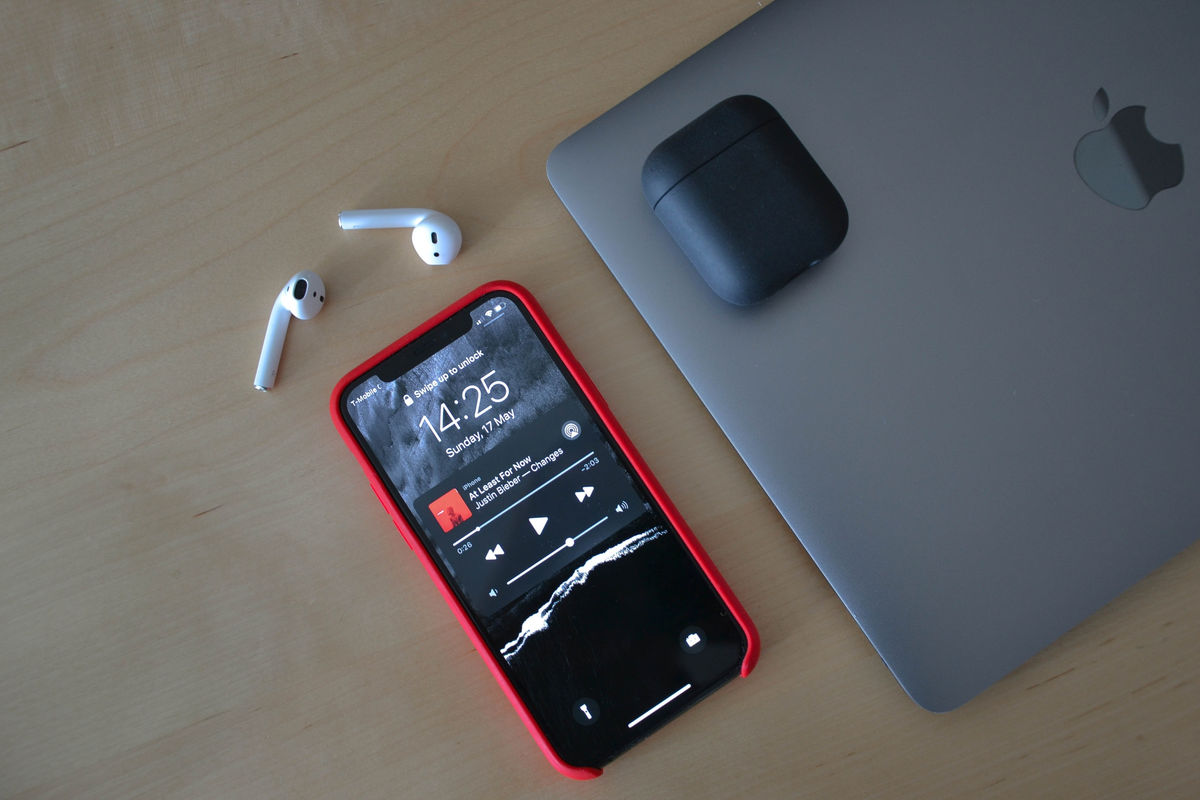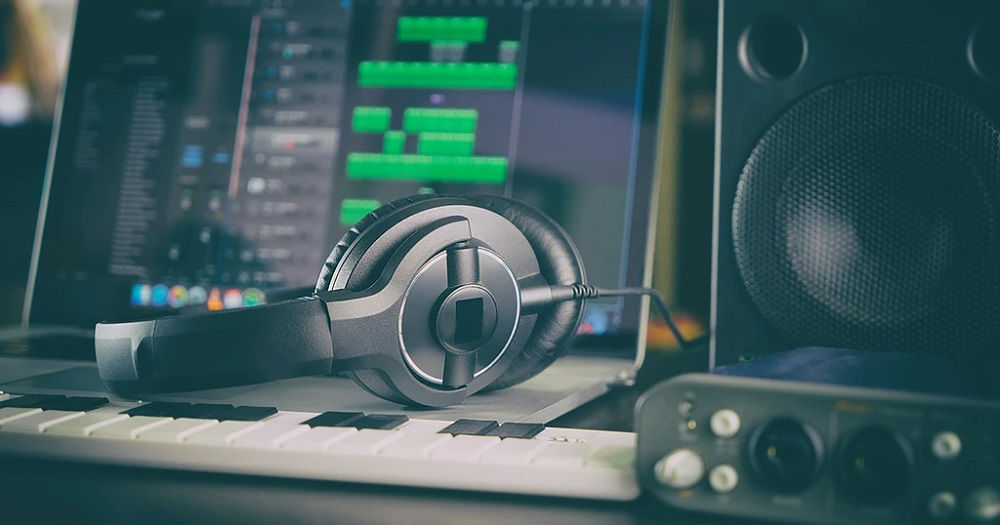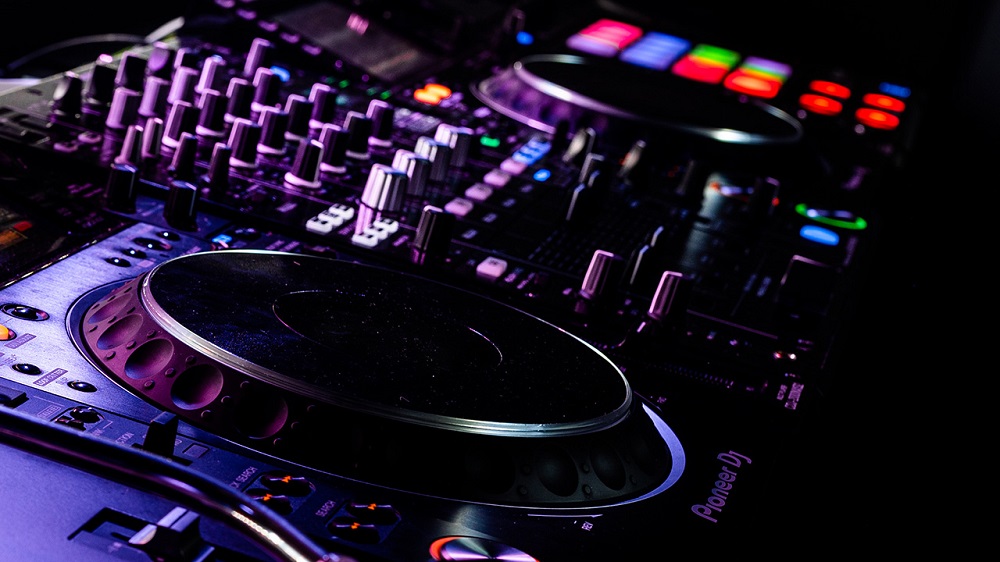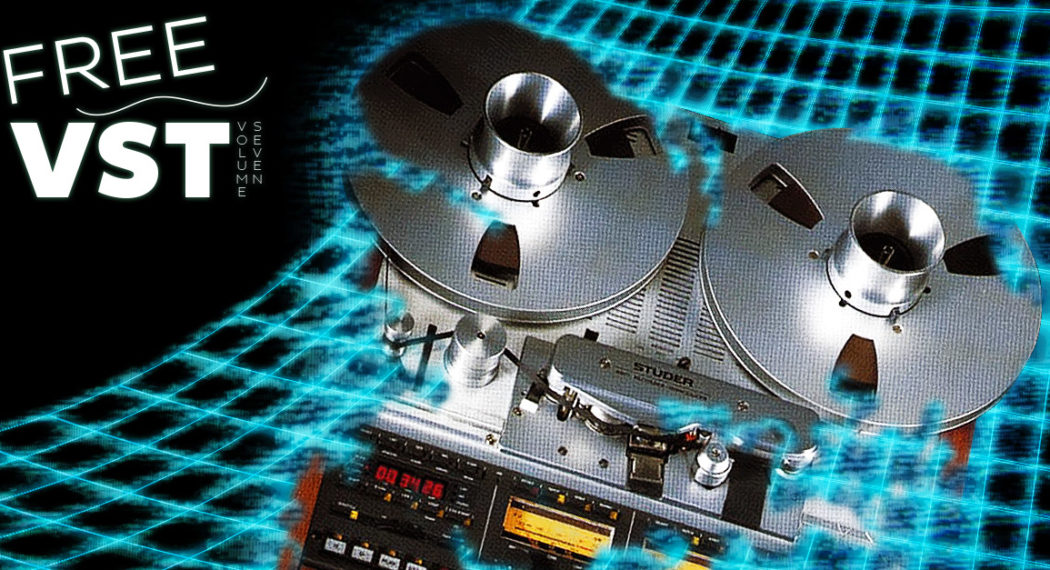Dave Pensado’s preferred mixer shares some hot tips. Rob Burrell is a mix engineer who recently became Pensado’s Place’s preferred mixer.
What do they have in common? A love of music and educating the next generation.
Burrell’s mixing credits include huge rock and country acts like Michael W. Smith, Carrie Underwood, Lady Antebellum, and many others. He’s also mixed sound for film and is now working on a hard rock EP, a pop-opera album and music for three Sea World roller coasters.
“I don’t do genres—I make music. I listen to music that’s all over the map and I’m incredibly thankful that the same diversity comes across my console daily. My clients comes from all over the world, and I’m having the time of my life.”
He’s got us asking: what’s your secret?
From Singing to Stepping Behind the Console
Rob Burrell wanted to become a singer and went to college to do a vocal performance major.
One day a professor took him to a background vocal session he was producing:
“I’d never been in a studio before, that night everything changed” Burrell recalls. “Watching the producer and engineer accomplish what I had heard my whole life—and naively thought just happened automatically—my entire focus changed. It was the perfect blend of tech and musicianship.”

Burrell shifted gears and enrolled in a Recording and Production program. “I got my first assistant gig in 1994 while I was still in college, and that first job turned into my first Platinum record to hang on the wall.”
A decade later, he shifted his focus to mix engineering—not just an engineer who mixes.
“It was scary because I had four young kids and a wife to provide for—but that’s a pretty good motivation to succeed! It was a rough transition, but it paid off. Somewhere around 5,000 mixes later, I still wake up everyday like it’s Christmas morning!”
Burrell has worked hard to get where he is. Along the way he’s figured out what works and what doesn’t. It’s a time-tested approach every aspiring producer should learn from.
Luckily, Burrell believes in building the future of mix engineering as well. Here are Rob Burrell’s 11 tips for mixing, studio workflows and living life, in his words:
1. Ask WHY?
I ask myself this question hundreds of times a day—consciously or subconsciously—out of years of practice. It’s a concept that I challenge all my interns, assistants and my clients with.
If you can’t define the “WHY?” to each and every action, you’re just wandering around hoping to stumble onto something that serves the song well. If you don’t know your end goal, you can’t know how to get there.
Sometimes it’s fun to hop in the car and drive wherever the road takes you. But if you’re supposed to be going out for a bag of coffee and your client is coming in 15 minutes… Might not be the best time for a joyride.
For example, I have a bass guitar on a rock track that is driving the chord changes and it isn’t cutting through. I’ve already defined “WHY?” it needs to cut through: because it’s crucial to the changes.
If I’m choosing a 1176 Blackface peak limiter over a STA-Level Tube Compressor after I pound it with 15dB of 800 Hz, 15dB of 1kHz and more shelf above that. WHY am I doing that? Is it because I read somewhere that you’re supposed to use an 1176 on bass? There’s no “WHY?” there—no thought process of your own.
I want the 1176 is because it’s quick enough to warm and round out a bunch of the clack up top I just created. I was looking for definition in the note changes and it gives me exactly that. The STA would glue it to the wall, but it would give me too much of the nasal region of the bass. It wouldn’t react as quickly to tame the front edge of the string noise.
In the early part of your career, this will look more like “I THINK this is why…” As you learn and grow your mixing vocabulary, you’ll be able to say with confidence: “This IS why I chose what I did.” So don’t get too hung up on “settings” or just become a preset robot. Instead, start being aware of your thought process and control it, rather than hoping to get lucky.
2. Bring out the Emotion
Music is emotional! There’s no way around it. Sure, it’s technical and it’s a business. But at the end of the day music is born out of emotion—it expresses emotion, invokes emotion, and we should do everything we can to maximize it during mixing and mastering.
So listen to your songwriter, your artist, your producer and find the heart that drives the song. Sometimes this will be obvious when you listen, sometimes you’ll need to dig deeper.
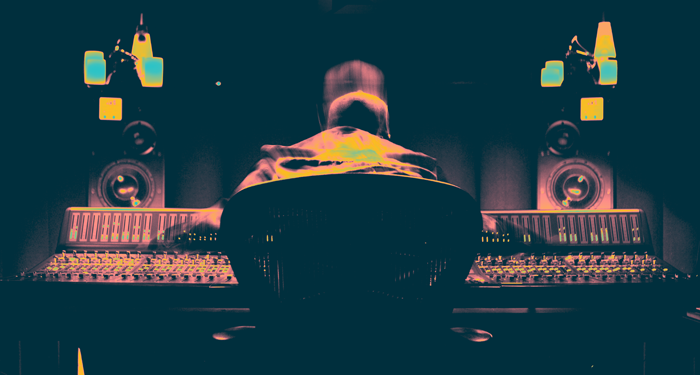
If you invest emotionally and get inside the music, you’ll make much better decisions to serve it best as you can. And of course remember to ask your hundreds of “WHY?” throughout the day.
3. Check Your Acoustics
This is absolutely critical. If you spend any time on the internet, you’ll read that it’s all about “acoustics, acoustics, acoustics.” That’s true.
As a young up-and-coming engineer I always had my eye on more gear. I was sure it would make my mixes awesome. Or a new set of speakers so I could hear better. A killer set of speakers isn’t going to matter at all until you have a great acoustic situation sorted out.
The great news is that there are so many great products out there to help you. You don’t have to spend hundreds of thousands of dollars to get your control room dialed in.
For instance, I use the ASC Attack Wall system which I’ve owned for 17+ years and it’s absolutely amazing! People walk into my room to listen and cannot believe that it’s a modular acoustic system and not a 6-figure buildout.
So take some time to learn about acoustics. It’s your job to understand how it affects your work! Grab a free copy of Room EQ Wizard and a measurement mic, and make a plan for spending some money to get your room sorted out. Otherwise you’ll buy a killer new tube compressor and won’t even be able to properly hear what it’s doing.
4. Choose Your Monitoring Chain Wisely
After your space is dialed in, having a killer monitoring chain is key.
A master DAC (Digital-to-Analog Converter) and speakers that you know intimately will give you a window to how your mixes translate in the real world. You want your speaker to give you the whole picture—not to leave out or gloss over parts of the picture that need more work.
Speaker choice is a personal preference but don’t just pick something that sounds good. Choose something that will inspire you to work harder to make a killer mix. There are speakers out there that I’ve tried and made me think I had knocked the mix out of the park… Only to go listen in the car and realize I should’ve kept working for another two or three hours!
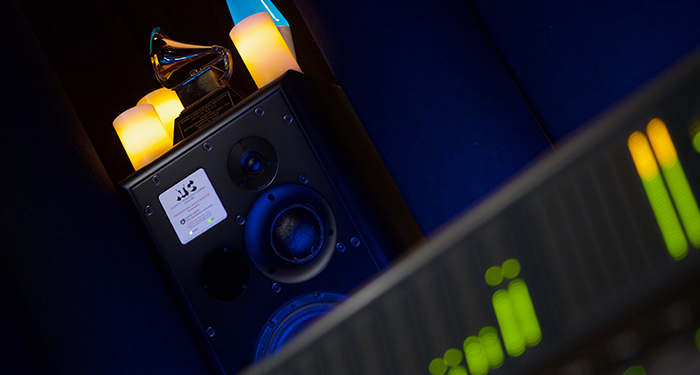
So it’s important to have an honest speaker to guide your way. My personal choice are these ATC SCM50’s with dual Bag End subwoofers. I know that what I hear in my room will sound the way I intended when the mix heads out the door.
5. Balance the Right and Left Brain
Mixing should be a fluid process of constantly moving back and forth between the analytical (left) and creative (right) sides of our brain—never staying in one side for too long.
I love the technology we have today. I’m not afraid to say that I don’t miss the days of analog tape. I absolutely have no issues with what’s going on in the digital world and really love the flexibility it allows us to have.
I do have one issue: the fact that we’re staring at a screen all the time. Looking at music? No thanks…
This is something I’m very particular about. My main screens are off to the side so I physically have to turn my body to see them. I just don’t want to see music while I mix! Instead I’m grabbing faders, turning knobs, staring off into the space in front of me visualizing my mix and being moved by it—rather than being influenced by pretty colors on the screen or an EQ curve that “looks” too aggressive when I see the graph on the computer.
It’s very important to my personal workflow that I focus on the music. Obviously for editing we need to look at the screen or occasionally a plugin, but mixing is different. It should be a creative and musical experience. Even if it’s a single fader with a few knobs that let you to do more than one action at a time. That already has more emotion.
Give tactile mixing a try. It will truly change the way you think and hear in your process—not to mention increase the speed at which you can accomplish what’s in your head.
6. Think Analog for Headroom and Levels
In the digital age, even with great 32 and 64-bit mix busses, we should still be aware of analog reference levels. We love all our hardware emulation plugins, and designers have primarily created those based on analog gain staging.
The key to getting the best sound is to understand that the zero we see in our DAW’s is 0 dBfs (dB full-scale). That means end of the line, no more room. With Pro Tools meters, I always say that yellow is the new red.
Take a vocal, for instance. When a vocalist hits the region where green becomes yellow, the vocal is likely approaching digital zero. This is because of the slowness of PPM meters (‘pseudo peak’) and the harmonic complexity of the human voice. If that same vocal is glued in the yellow or tickling red, you are missing out on the optimal operating range of analog gear—converters and plugins alike.
Learn what reference your DAW uses (-16, -18, -20, etc.) and start watching your meters. So much of the width and depth we want a plugin to achieve is often easy to do by simply reclaiming the headroom we’ve lost from poor practices.

This applies to samples and Virtual Instruments (VI) as well… so often they output right at zero. Don’t be afraid to turn the master of the VI down 10 or even 20dB! Who cares if the waveforms look small! GOOD! That’s why we have zoom functions on computers.
7. Get Down to Business
“Business Matters.” As musicians, we hate to think this way. But for a lot of us, learning to be businesspeople is crucial. At a certain point, you’ll need to make money to keep making music.
With intellectual property being so undervalued today, do your best NOT to undervalue it further with your clients. When you do work for free, that client will rarely want to give you more.
Charge something, even if it’s just a little. As your ability and clientele grows, your rate should also. Eventually, you may be supporting a spouse and children—free doesn’t buy a lot of groceries or diapers!
Study the business around you, understand your place in the chain, and think forward. Not just how to survive today, but what it will take to survive in the future.
8. Don’t chase. Lead!
Any time you play it safe, you risk losing the client. We are hired for our opinion. If the client hears the mix and isn’t more moved than when they sent you the rough mix, what do they need you for, anyway?
I work hard to push boundaries every day—my own personal boundaries as well as the client’s. I might go too far and scare them a bit… AWESOME! I can always dial it back if I’ve gone out of bounds. If I went 10% beyond where they thought they were comfortable and we dial it back 5%, we’ve all still pushed our boundaries by 5%. This is evolution—carving new and exciting paths.
Playing it safe won’t get you a win. Be bold, maybe even reckless! Music is dangerous, so be fearless! BUT here’s two rules to remember…
- Don’t be different just to be different! Know WHY you’re doing something different!
- Make sure you are ready to listen to your client above your own ego, because if you aren’t a good collaborator, you may not get the call next time around.
9. Know the Reference
There are two components to this.
The first component is: what audio format is the reference? Always be aware when checking against commercial releases of the format you’re listening to. Streaming? iTunes download? CD? HD Master? Lossy formats are just that… Information has been lost.
If you listen to a stream and try to copy what you’re hearing, I can almost guarantee you’ll have less top and bottom than you should and too much overall compression/limiting. These formats don’t breathe the way your full resolution master should.
Be aware of the effects of these processes and listen for vibe and generalities, rather than accepting it as complete sonic truth. We shouldn’t be trying to copy another mix anyway, but be super careful of the tonal shape of each of the different formats.
It’s also crucial to know what your clients are referencing, because I’ve had “the mix is a bit too bright” comment before and after sending an MP3 reference rather than a WAV file, the top end was suddenly what they wanted. Sad, but true… know your formats!
The second component is simple. Just remember that no two songs are alike! Don’t try to squeeze your mix into a sonic box to match a commercial mix that you love. Again, listen for vibe and generalities. Do your own thing!
10. Ask questions
We ALL should ALWAYS be learning! I purposely set out to learn something new everyday.
There’s always someone who’s been at it longer than you, and those of us that have been at this for a minute love to share our passion for what we’ve learned.
Fight for knowledge and understanding on your own, but don’t be afraid to ask those that have years of experience. We all start at the bottom and grow from hard work and people speaking into our craft and career. This is community at its best!
11. Live life
Hustle, yes. Hustle hard. Music life is challenging, but therefore very rewarding! So live life with those you love.
Inspiration comes from the world around us. Work your tail off—we all need to in order to keep our edge. But without recharging you’ll get burned out.
No person is an island, so go hang out on an island with some family or friends!




